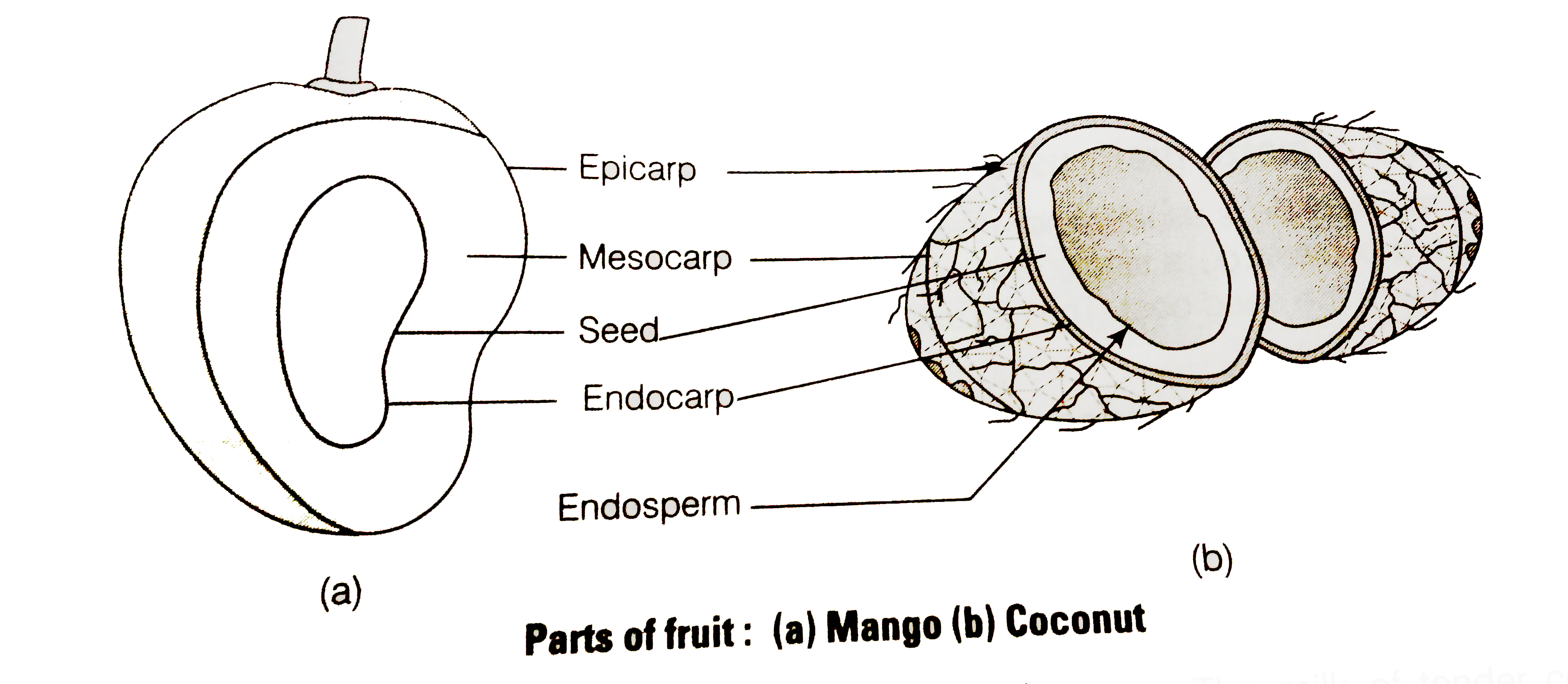In mango the paricarp is well differentiated into an outer …a… epicaro, a middle …b… mesocarp and an inner ….c… endocarp
a-thin,b-stony hard, c-fleshy
a-fleshy,b-thin,c-stony hard
a-thin,b-fleshy,c-stony hard
a-stony hard, b-fleshy, c-thin
The correct Answer is:C
In mango, the paricarp is well differentiated into an outer thin epicarp, a middle fleshy mesocarp and an inner stony hard endocarp.
Topper's Solved these Questions
- MORPHOLOGY OF FLOWERING PLANTSBOOK - A2ZCHAPTER - MORPHOLOGY OF FLOWERING PLANTSEXERCISE - Section A : Topicwise Questions Topic 6 : Semi-technical Description Of A Typical Flowering Plant An
36 Videos
- MORPHOLOGY OF FLOWERING PLANTSBOOK - A2ZCHAPTER - MORPHOLOGY OF FLOWERING PLANTSEXERCISE - Section B : Assertion-reasoning Questions
11 Videos
- MORPHOLOGY OF FLOWERING PLANTSBOOK - A2ZCHAPTER - MORPHOLOGY OF FLOWERING PLANTSEXERCISE - Section A : Topicwise Questions Topic 4 : Inflorescence And Flower (parts Of A Flower , Calyx , Coro
42 Videos
- MOCK TEST 3BOOK - A2ZCHAPTER - MOCK TEST 3EXERCISE - Mock Test
90 Videos
- NEURAL CONTROL AND COORDINATIONBOOK - A2ZCHAPTER - NEURAL CONTROL AND COORDINATIONEXERCISE - Section D : Chapter-end Test
50 Videos
Similar Questions
Mango and coconut are drupe fruits. They develop from monocarpellary superior ovaries and are one seeded. It is differentiated inot outer thin epicarp, middle fleshy mesocarp and inner stony endocarp .

The edible part of coconut (Cocos nucifera) is endosperm . The milk of tender coconut represents the oily endosperm in liquid form. Later it gets deposited along the walls of endocrap and forms edible flesh.
View SolutionDifferentiate between
Inner solar system and outer solar system
View Solution
Knowledge Check
A fruit having differentiation of epicarp, mesocarp and stony endocarp is
ABerryBDrupeCSycosisDsorosisWhich of the following is / are correct ?
I in dry fruits the pericarp is dry and is not differentiated into epicarp mesocarp and endocarp
II in succulent fruits the pericarp is fleshy and is differentiated into epicarp mesocarp and endocarp
III capsular fruits are those simple dry multi seeded after ripening and seeds are exposed
IV achenial fruits are multiseeded dehiscent in which pericarp ruptures and seeds remain inside
Choose the correct optionAonly IVBI II and IIICAll the theseDnone of theseRead the following statements and find out the incorrect statements.
a. Anatomically, the ear can be divided into three major sections called the outer ear, the middle ear and the inner ear.
b. The outer ear consists of the pinna and external auditory meatus (canal).
c. The tympanic membrane (ear drum ) is composed of connective tissue covered with mucus membrane outside and with skin inside.
d. The ear ossicles reduces the efficiency of transmission of sound waves to the inner ear.
e. The pinna collects the vibrations in the air which produce sound.Aa and bBb and cCc and dDd and e
Figure shows three concentric conducting spherical shells with inner and outer shells earthed and the middle shell is given a charge q. Find the charge distribution of sphere

View SolutionThe blastomeres in the blastocyst are arranged into an outer layer called (A)–––– and an inner group of cells attached to trophoblast called (B)––––.
View SolutionA point charge +q is placed at the centre of a conducting spherical shell of inner radius a and outer radius b. Find the charge appearing on the inner and outer surface of the shell.
View SolutionImmediately after implantation, the inner cell mass differentiate into-:
A. Ectoderm
B. Mesoderm
C. Myometrium
D. Endoderm
View SolutionCapcity of a spherical capacitor is C1 when in sphere is charged and outer sphere is earthed and when inner sphere is earthed and outer sphere charged. Then C1C2 is (a = radius of inner sphere b = radius of outer sphere)
View Solution
